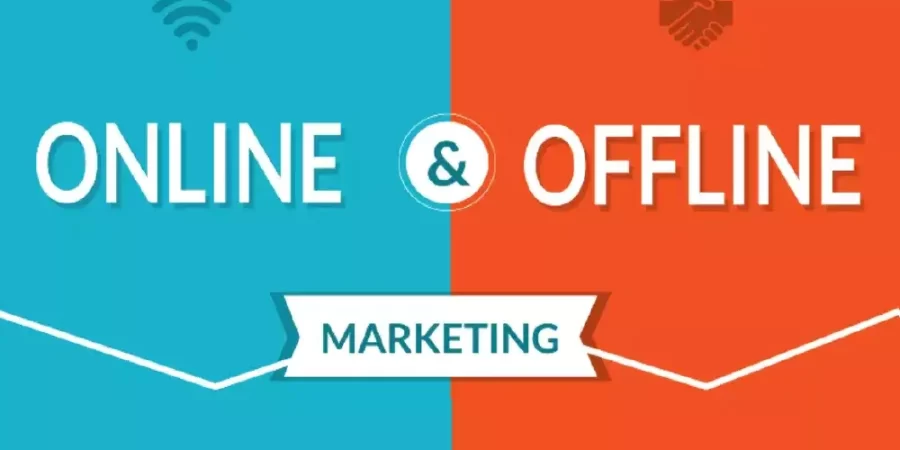Beginners Guide: How To Integrate Online Marketing With Offline Marketing?
Integrating online marketing with offline marketing is essential for businesses looking to reach their target audience in a comprehensive and effective manner. By utilizing a combination of both digital and traditional marketing strategies, companies can create a cohesive and well-rounded marketing plan that maximizes their return on investment. In this article, we will discuss some key strategies for integrating online marketing with offline marketing to help businesses achieve their marketing goals.
First, it is important to understand the key differences between online and offline marketing. Online marketing refers to any marketing efforts that take place on the internet, such as social media marketing, search engine optimization, and email marketing. Offline marketing, on the other hand, refers to traditional marketing efforts that take place outside of the digital world, such as television and radio advertising, print advertising, and direct mail.
One effective strategy for integrating online and offline marketing is to use online marketing to drive offline sales. For example, a business could use social media to promote a sale or event happening in their physical store. This can be done by creating a Facebook event, sending out an email blast, or even creating a video that can be shared on Instagram or YouTube. By using online marketing to drive offline sales, businesses can reach a wider audience and increase the chances of success for their offline event.
Another strategy for integrating online and offline marketing is to use offline marketing to drive online sales. This can be done by creating a unique landing page for a print ad, or by including a QR code in a television commercial that directs viewers to a specific webpage. By using offline marketing to drive online sales, businesses can track the effectiveness of their offline campaigns and adjust their strategy accordingly.
In addition to these strategies, businesses can also use data to inform both their online and offline marketing efforts. By analyzing data on customer behavior, preferences, and demographics, businesses can tailor their marketing campaigns to reach the right audience and achieve their desired results. This can be done by using tools such as Google Analytics to track website traffic, or by conducting surveys to gather customer feedback.
Another way to integrate online and offline marketing is to create a consistent message and branding across all platforms. This means that the language, imagery, and overall message used in online marketing should be consistent with that used in offline marketing. This will help to create a cohesive brand image and make it easier for customers to recognize and remember your business.
Businesses should also consider the use of influencer marketing to integrate online and offline marketing efforts. Influencer marketing is the process of working with social media influencers to promote a product or service. This can be done by having an influencer post about your product on social media, or by hosting an event where influencers can try your product and share their experience with their followers.
Integrating online marketing with offline marketing is essential for businesses looking to reach their target audience in a comprehensive and effective manner. By utilizing a combination of both digital and traditional marketing strategies, companies can create a cohesive and well-rounded marketing plan that maximizes their return on investment. By using online marketing to drive offline sales, offline marketing to drive online sales, analyzing data, creating a consistent message and branding, and using influencer marketing, businesses can effectively integrate their online and offline marketing efforts and achieve their desired results.
Another important aspect to consider when integrating online and offline marketing is to have a mobile-friendly strategy. With the increasing use of smartphones and mobile devices, it is essential for businesses to have a mobile-friendly website and ensure that their marketing campaigns are optimized for mobile. This can include having a responsive design for your website, creating mobile-friendly email campaigns, and even creating mobile apps for your business. By having a mobile-friendly strategy, businesses can reach customers where they are spending most of their time and increase the chances of conversions.
Another effective strategy for integrating online and offline marketing is to use location-based marketing. Location-based marketing refers to using data on a customer’s location to target them with relevant advertising and promotions. This can be done through mobile apps, geofencing, or even by using location-based social media advertising. By using location-based marketing, businesses can target customers when they are in the vicinity of their store or event, increasing the chances of conversion.
Integrating online and offline marketing also requires the use of different types of content. While online marketing primarily uses written content, offline marketing can use visual, audio or even experiential content. In order to effectively integrate the two, businesses need to create a mix of different types of content that can be used across different platforms. This can include creating videos, infographics, podcasts, and even virtual reality experiences that can be shared online and offline.
Another important strategy for integrating online and offline marketing is to use customer engagement. Engaging customers online and offline can help businesses build a loyal customer base and increase brand awareness. This can be done by hosting events, creating interactive content, or even using gamification. By using customer engagement, businesses can create a sense of community and foster a connection with their customers.
It is important for businesses to track and measure the success of their online and offline marketing efforts. This can be done by using tools such as Google Analytics, social media analytics, and customer feedback surveys. By tracking and measuring the success of your marketing efforts, businesses can make informed decisions on where to allocate resources and make adjustments to their strategy as needed.
Integrating online marketing with offline marketing is crucial for businesses looking to reach their target audience in a comprehensive and effective manner. By utilizing a combination of digital and traditional marketing strategies, companies can create a cohesive and well-rounded marketing plan that maximizes their return on investment. By having a mobile-friendly strategy, using location-based marketing, creating a mix of different types of content, using customer engagement, and tracking and measuring the success of your marketing efforts, businesses can effectively integrate their online and offline marketing efforts and achieve their desired results.
Here are some detailed bullet points that summarize the key points discussed in the article about how to integrate online marketing with offline marketing:
- Using online marketing to drive offline sales: By promoting an offline event or sale on social media, email, or video, businesses can increase the visibility of the event and drive more customers to the physical store.
- Using offline marketing to drive online sales: By creating a unique landing page or including a QR code in a traditional ad, businesses can direct customers to their website and track the effectiveness of the offline campaign.
- Using data to inform both online and offline marketing efforts: By analyzing customer behavior, preferences, and demographics, businesses can tailor their marketing campaigns to reach the right audience and achieve their desired results.
- Creating a consistent message and branding across all platforms: By maintaining the same language, imagery, and overall message in both online and offline marketing, businesses can create a cohesive brand image that is easily recognizable and memorable.
- Utilizing influencer marketing: By working with social media influencers to promote a product or service, businesses can increase brand awareness and reach a wider audience.
- Having a mobile-friendly strategy: With the increasing use of mobile devices, it is essential for businesses to have a mobile-friendly website and ensure that their marketing campaigns are optimized for mobile.
- Using location-based marketing: By using data on a customer’s location to target them with relevant advertising and promotions, businesses can increase the chances of conversion when customers are in the vicinity of their store or event.
- Using different types of content: Creating a mix of different types of content that can be used across different platforms, such as videos, infographics, podcasts, and virtual reality experiences can help to effectively integrate online and offline marketing efforts.
- Engaging customers: By hosting events, creating interactive content, or using gamification, businesses can foster a connection with customers and build a loyal customer base.
- Tracking and measuring the success of marketing efforts: By using tools such as Google Analytics, social media analytics, and customer feedback surveys, businesses can make informed decisions on where to allocate resources and make adjustments to their strategy as needed.
In conclusion, integrating online marketing with offline marketing is a vital strategy for businesses looking to reach their target audience and achieve their marketing goals. By utilizing a combination of digital and traditional marketing strategies, businesses can create a comprehensive and effective marketing plan that maximizes their return on investment. From using online marketing to drive offline sales, to having a mobile-friendly strategy, to engaging customers, there are many ways to effectively integrate online and offline marketing efforts. By keeping in mind these strategies and continually tracking and measuring the success of your marketing efforts, businesses can stay ahead of the curve and be successful in today’s ever-evolving digital landscape.





Leave a Reply